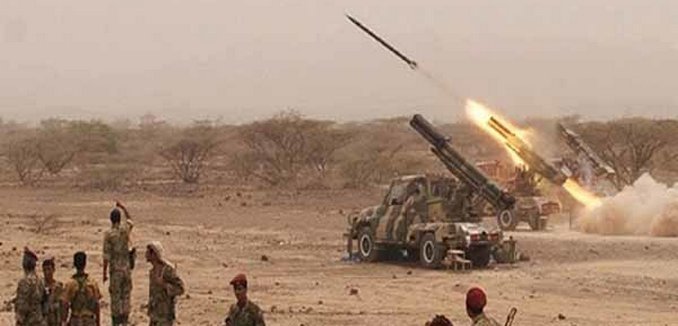Saudi Arabia claims to have intercepted a ballistic missile that was fired at its royal palace by Iran-backed Houthi rebels in Yemen, The Wall Street Journal reported Tuesday.
According to a spokesman for the Saudi-led coalition fighting the rebels in Yemen, Saudi air defenses intercepted the Volcano H2 (or Burkan H2) missile south of Riyadh. No injuries or damages were reported.
The spokesman, Col. Turki Al-Malki, said, “This aggressive and arbitrary act by the armed Houthi Iranian group proves the continued involvement of the Iranian regime in supporting the Houthis…with the aim of threatening the security of the Kingdom.”
Iran is prohibited by the terms of United Nations Resolution 2231, which implemented the 2015 nuclear deal with Iran, from exporting weapons for another three years.
The sound of the interception could be heard all over Riyadh. Photos and videos showing a puff of smoke, apparently the point of interception, were posted onto social media.
Over the past three years, the Houthis have fired dozens of missiles into Saudi Arabia, including one that landed near Saudi Arabia’s King Khalid International Airport last month.
Last week, the United States Ambassador to the United Nations Nikki Haley displayed remains of a missile and other weapons recovered from Saudi Arabia. She said that one missile had components that served as “Iranian missile fingerprints.”
Despite the charges by the United States and its Gulf allies that Iran is arming the Houthis, the Journal reported “U.N. experts, however, said in a report that the Iranian origins of the missile were inconclusive.”
Several news reports during the past year and a half have provided strong evidence that Iran and its allies are, indeed, arming the Houthis.
In October of last year, Reuters, citing multiple sources, including an Iranian diplomat, reported that Iran had opened up an arms-smuggling route to the Houthis in Yemen through the Gulf state of Oman. Several weeks later, a British group studying weapons transfers, Conflict Armament Research, issued a report that found that there was likely “a weapon pipeline extending from Iran to Somalia and Yemen, which involves the transfer, by dhow, of significant quantities of Iranian-manufactured weapons and weapons that plausibly derive from Iranian stockpiles.”
In August of this year, The New York Times reported that Hezbollah, Iran’s Lebanon-based proxy, provided “military and logistical support” to the Houthis.
And in September, the outgoing commander of the United States Fifth Fleet, Vice Adm. Kevin Donegan, said that Iran was providing the Houthis “an increasingly potent arsenal of anti-ship and ballistic missiles, deadly sea mines and even explosive boats that have attacked allied ships in the Red Sea or Saudi territory across Yemen’s northern border.” He added that given that these advanced weapons were not present in Yemen prior to the civil wear, “It’s not rocket science to conclude that the Houthis are getting not only these systems but likely training and advice and assistance in how to use them.”
[Photo: Mehr News]




